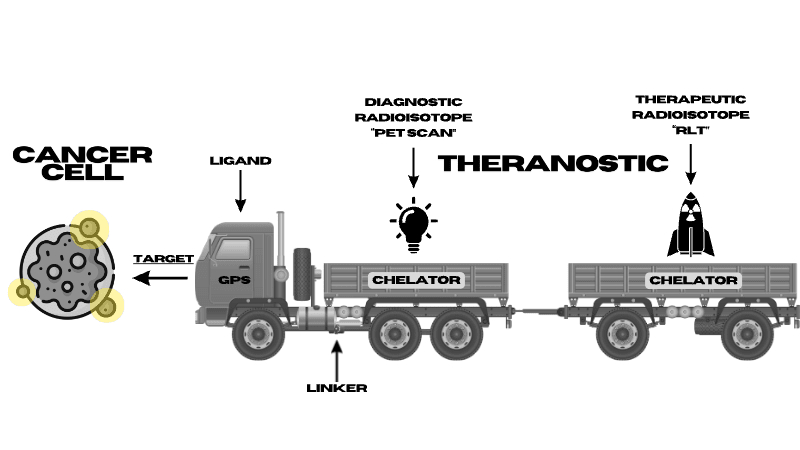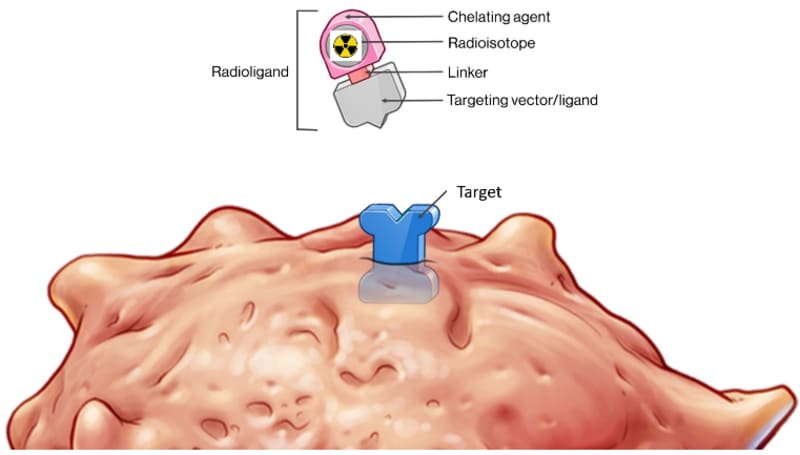RLT Components
RADIOLIGAND THERAPY (RLT) is a highly effective approach to very accurately locating cancer cells and effectively killing those same cells by delivery various radioisotopes to a specific target that is located on a type of cancer. Some of the Radioisotopes are diagnostic for locating cancers & some therapeutic to treat the cancers. There are several Components to a RLT that are simply demonstrated in the truck diagram below including:

The specificity and abundance of the target on the cancer cells determine the effectiveness of detection on PET scans and the success of RLT. A highly specific target reduces side effects, while a less specific target increases the likelihood of side effects. For example, PSMA is a common target for prostate cancer but is also found in salivary glands, leading to potential side effects like dry mouth when targeting prostate cancer.


